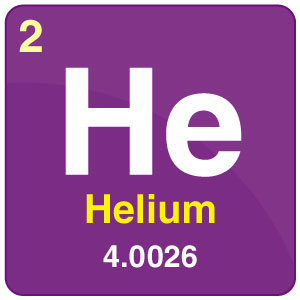Chemistry
Vocabulary [A to Z]
Part - 2 (51 to 100)
51. Cohesion
the force that holds together molecules in a solid or liquid
52. Colloid
a mixture with properties between those of a solution and fine suspension
53. Combustion
a reaction of a substance with oxygen to give heat and light
54. Composition
the way in which someone or something is put together
55. Compound
a substance formed by chemical union of two or more elements
56. Concentration
the strength of a solution
57. Condensation
process of changing from a gas to a liquid or solid state
58. Conductivity
the property of transmitting heat, electricity, or sound
59. Conductor
a substance that readily serves as a medium for transmission
60. Covalent Bond
a chemical bond that involves sharing a pair of electrons between atoms in a molecule
61. Crucible
a vessel used for high temperature chemical reactions
62. Crystal
a solid having a highly regular atomic structure
63. Crystalline
consisting of or containing or of the nature of crystals
64. Decomposition Reaction
(chemistry) separation of a substance into two or more substances that may differ from each other and from the original substance
65. Density
the amount per unit size
66. Deposition
the natural process of laying something down
67. Desalination
the removal of salt
68. Diatomic
of or relating to a molecule made up of two atoms
69. Dilution
a solution reduced in strength or concentration
70. Dissolve
pass into a solution
71. Distillation
purifying a liquid by boiling it and condensing its vapors
72. Dmitri Mendeleev
Russian chemist who developed a periodic table of the chemical elements and predicted the discovery of several new elements (1834-1907)
73. Double Bond
a covalent bond in which two pairs of electrons are shared between two atoms
74. Double Replacement Reaction
a chemical reaction between two compounds where the positive ion of one compound is exchanged with the positive ion of another compound
75. Ductile
capable of being shaped or bent or drawn out
76. Electrolysis
(chemistry) a chemical decomposition reaction produced by passing an electric current through a solution containing ions
77. Electron
an elementary particle with negative charge
78. Electronegativity
(chemistry) the tendency of an atom or radical to attract electrons in the formation of an ionic bond
79. Element
a substance that cannot be separated into simpler substances
80. Empirical Formula
a chemical formula showing the ratio of elements in a compound rather than the total number of atoms
81. Endothermic
occurring or formed with absorption of heat
82. Endothermic Reaction
a chemical reaction accompanied by the absorption of heat
83. Energy
any source of usable power
84. Entropy
energy in a system no longer available for mechanical work
85. Enzyme
a complex protein produced by cells that acts as a catalyst
86. Equilibrium
a chemical reaction and its reverse proceed at equal rates
87. Evaporation
the process of becoming a suspension of particles in the air
88. Exothermic
occurring or formed with the release of heat
89. Exothermic Reaction
a chemical reaction accompanied by the evolution of heat
90. Family
a collection of things sharing a common attribute
91. Fermentation
breaking down an organic substance, as sugar into alcohol
92. First Law Of Thermodynamics
the fundamental principle of physics that the total energy of an isolated system is constant despite internal changes
93. Fission
splitting a massive nucleus with the release of energy
94. Flammable
easily ignited
95. Free Energy
(physics) a thermodynamic quantity equivalent to the capacity of a physical system to do work; the units of energy are joules or ergs
96. Freezing
the withdrawal of heat to change something from a liquid to a solid
97. Freezing Point
the temperature below which a liquid turns into a solid
98. Fusion
reaction in which nuclei combine to form more massive nuclei
99. Gas
state of matter distinguished from solid and liquid states
100. Gay-Lussac'S Law
(physics) the density of an ideal gas at constant pressure varies inversely with the temperature
201. Temperature
the degree of hotness or coldness of a body or environment
202. Test Tube
glass tube closed at one end
203. Thermochemistry
the branch of chemistry that studies the relation between chemical action and the amount of heat absorbed or generated
204. Thermodynamics
physics concerned with heat and other forms of energy
205. Titration
a measured amount of a solution of unknown concentration is added to a known volume of a second solution until the reaction between them is just complete; the concentration of the unknown solution (the titer) can then be calculated
206. Valence
the combining power of an atom or radical
207. Valence Electron
an electron in the outer shell of an atom which can combine with other atoms to form molecules
208. Vaporization
the process of becoming a suspension of particles in the air
209. Viscosity
resistance of a liquid to flowing
210. Volume
the amount of 3-dimensional space occupied by an object
211. Weight
the vertical force exerted by a mass as a result of gravity
212. Yield
an amount of a product
Boyle’s Law
The volume of gas depends on its temperature and pressure. According to Boyle’s law, the volume (V) of a definite quantity of gas is inversely proportional to its pressure (P), at constant temperature (T).
V œ 1/P (Temperature constant)
V = K/P K = constant
PV = K

No comments:
Post a Comment